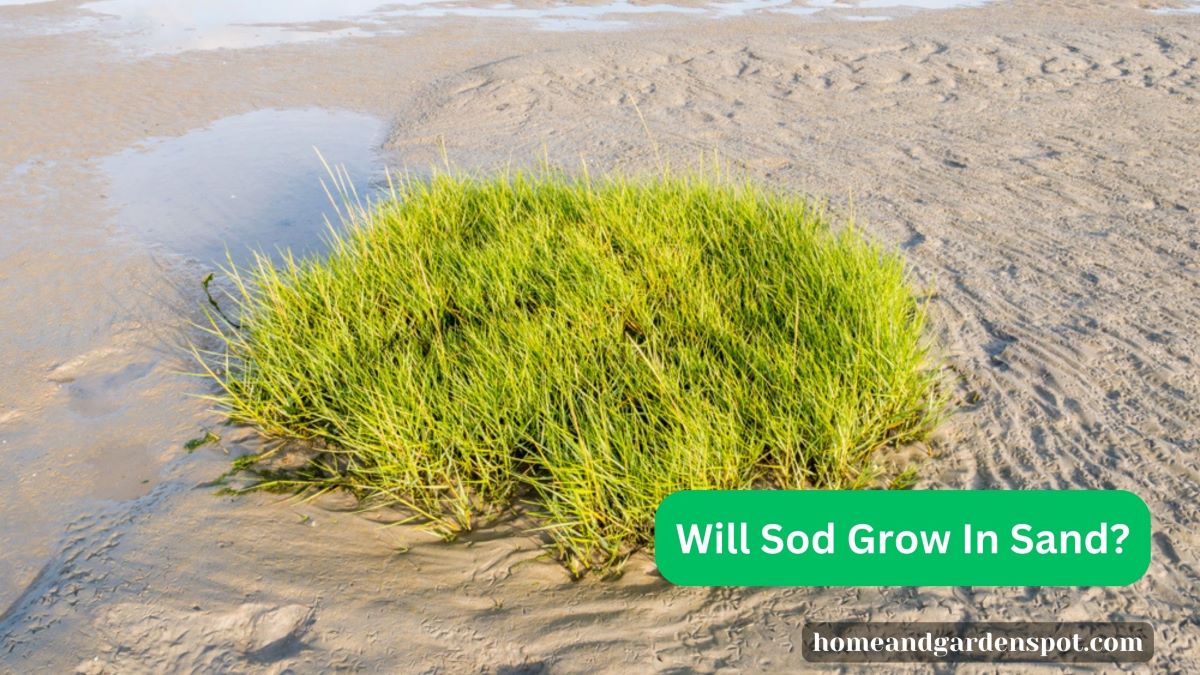Will sod grow in sand? Sod can grow in sand. But it will take some work and some time to get the results you want.
Sod is a type of grass that grows best in soil with lots of nutrients and water. So, if your soil is sandy or has little nutrients or water, it won’t be able to support sod.
The sand can be sandy clay, sandy loam, and loamy soil. The benefit of laying sod over sand, especially sandy soil with enough nutrients, is that it drains water quickly.
And remember that sod takes time to establish itself, so don’t expect immediate results. But if you have added organic material like manure, compost, and mulch, expect your sod to sprout on the sand.
Will Sod Grow in Sand?
Yes, sod will grow in the sand if you improve the soil structure first before laying the sod. Improving the soil structure means adding mulch, manure, and compost to the soil.
These are the essential nutrients the sand requires for the sod to grow in it. These nutrients also improve the micronutrient profile and soil water retention.
Will Grass Grow Over Sand
Grass can grow over sand but will have a slow growth rate. You can increase the growth rate by supplying it with enough nutrients.
Sandy soil makes the grass thrive well. So you need to create a topsoil overlay to bring strong support to the roots.
How Do You Prepare Sand For Sod?
If you want to try growing sod in the sand, start by preparing the sand. Follow the steps below to prepare the sand for your sod.
- Enhance water retention by applying a mineral soil additive called vermiculite. Also, apply a water-absorbing element like peat moss. But in acidic soil, use vermiculite instead.
- Add other essential and rich soil nutrients to the sand
- We recommend adding a fresh layer of topsoil to the sand.
How to Lay a Sod Over Sand
If you are planning on setting up your lawn using this method (and we highly recommend that you do), then here are some tips:
- Examine the site properly and see if it is best for laying sod. The best type of sand is one that has been screened so it’s free of rocks and other debris. You’ll want to make sure there are no rocks or stones in your sand. Otherwise, those little bits of rock can damage your sod once it starts growing.
- Check if the site receives appropriate sunlight or lesser sun and choose the best sod grass type you want
- Take measurements of the site and find out the number of sod you will buy
- Purchase the sod and bring them to the site on the day you will lay the sod
- Pull out weeds on the site or spray herbicide.
- Take out any debris on the soil and amend it by adding compost or topsoil and mixing them both properly.
- Level all uneven spots and grade for easy flow of water
- Rake the whole sand smoothly
- Water the sand lightly if it is not moist. This helps the sod to establish.
- Ensure the sod you purchased is healthy and freshly cut and wilted or dried out
- Lay the sod by closely putting the piece together and the joints staggered. On the slope of the sod, hold the pieces firmly with stakes.
- Fill any openings or spaces in the sod with dirt to prevent the edges from drying
- Water or irrigate the new sod thoroughly and deeply
- Allow the sod to dry properly and go over it with a roller ⅓ full of water. It helps to smoothen the sand and deepens the roots beneath the soil.
- Water the sod with 1 inch of water every two to three days. Don’t overwater the sod. Ensure to check moisture conditions by lifting a corner of the sod.
- Use a lawn mower to mow the sod after six or seven days.
- After about three weeks of laying the sod, water every four to seven days.
What is the best sod for sandy soil?
The best sod for sand soils is bentgrass, bahiagrass, Bermuda grass, and tall fescue. These are deep-rooted blades of grass that absorb water and nutrients easily in quick-draining sandy soils.
Conclusion
Growing sod in the sand is possible, but it may require some extra effort and care. Sand lacks many of the essential nutrients and water retention capabilities that are necessary for healthy sod growth.
However, by properly preparing the soil, selecting the appropriate sod variety, and implementing regular maintenance practices, such as frequent watering and fertilization, it is possible to grow sod successfully in sandy soil.
It’s important to remember that patience and diligence are key when working with sand-based soil and that results may not be immediate. Overall, with proper care and attention, it is possible to achieve a lush, healthy lawn even in sandy soil conditions.

Leave a Reply